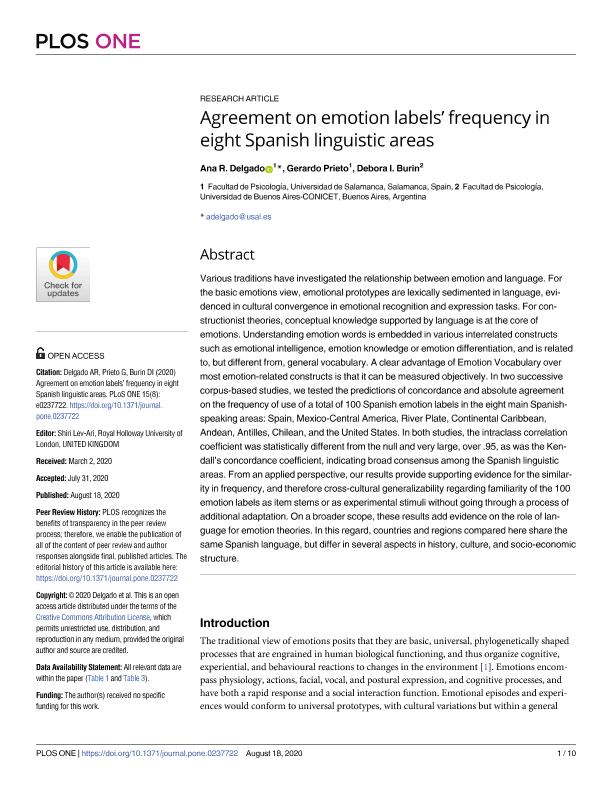Artículo
Agreement on emotion labels’ frequency in eight Spanish linguistic areas
Fecha de publicación:
08/2020
Editorial:
Public Library of Science
Revista:
Plos One
ISSN:
1932-6203
Idioma:
Inglés
Tipo de recurso:
Artículo publicado
Clasificación temática:
Resumen
Various traditions have investigated the relationship between emotion and language. For the basic emotions view, emotional prototypes are lexically sedimented in language, evidenced in cultural convergence in emotional recognition and expression tasks. For constructionist theories, conceptual knowledge supported by language is at the core of emotions. Understanding emotion words is embedded in various interrelated constructs such asemotional intelligence, emotion knowledge or emotion differentiation, and is related to, but different from, general vocabulary. A clear advantage of Emotion Vocabulary over most emotion-related constructs is that it can be measured objectively. In two successive corpus-based studies, we tested the predictions of concordance and absolute agreement on the frequency of use of a total of 100 Spanish emotion labels in the eight main Spanishspeaking areas: Spain, Mexico-Central America, River Plate, Continental Caribbean, Andean, Antilles, Chilean, and the United States. In both studies, the intraclass correlation coefficient was statistically different from the null and very large, over .95, as was the Kendall’s concordance coefficient, indicating broad consensus among the Spanish linguistic areas. From an applied perspective, our results provide supporting evidence for the similarity in frequency, and therefore cross-cultural generalizability regarding familiarity of the 100 emotion labels as item stems or as experimental stimuli without going through a process of additional adaptation. On a broader scope, these results add evidence on the role of language for emotion theories. In this regard, countries and regions compared here share the sameSpanish language, but differ in several aspects in history, culture, and socio-economic structure.
Palabras clave:
EMOTION
,
EMOTION WORDS
,
CULTURAL DIVERSITY
,
WORD FREQUENCY
Archivos asociados
Licencia
Identificadores
Colecciones
Articulos(SEDE CENTRAL)
Articulos de SEDE CENTRAL
Articulos de SEDE CENTRAL
Citación
Delgado, Ana R.; Prieto, Gerardo; Burin, Debora Ines; Agreement on emotion labels’ frequency in eight Spanish linguistic areas; Public Library of Science; Plos One; 15; 8; 8-2020; 1-10
Compartir
Altmétricas




